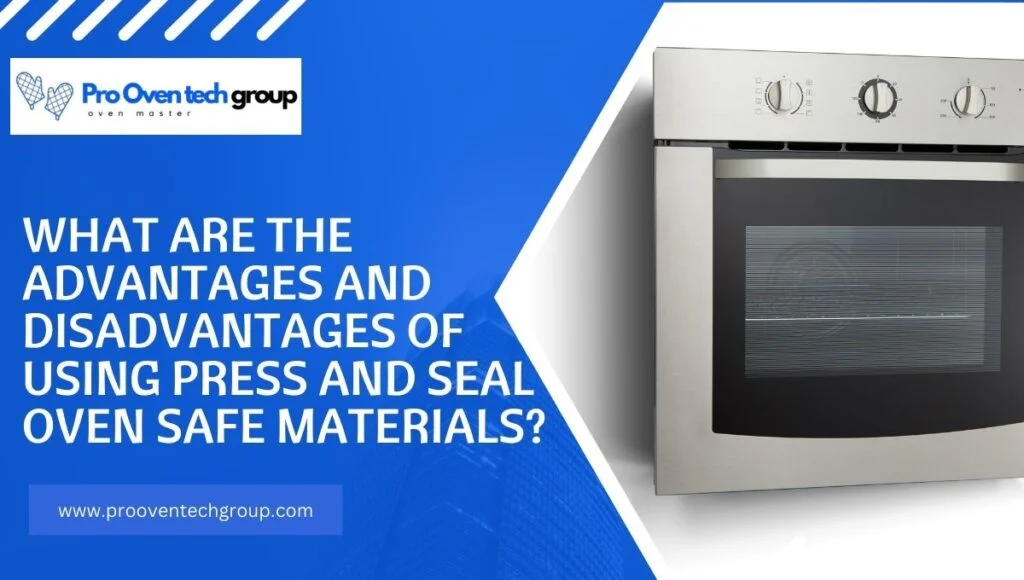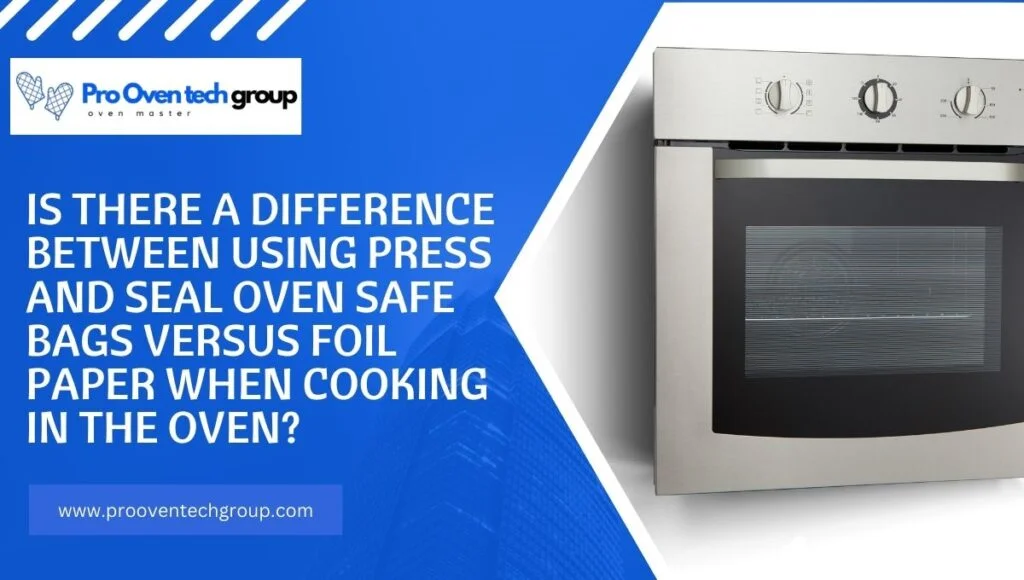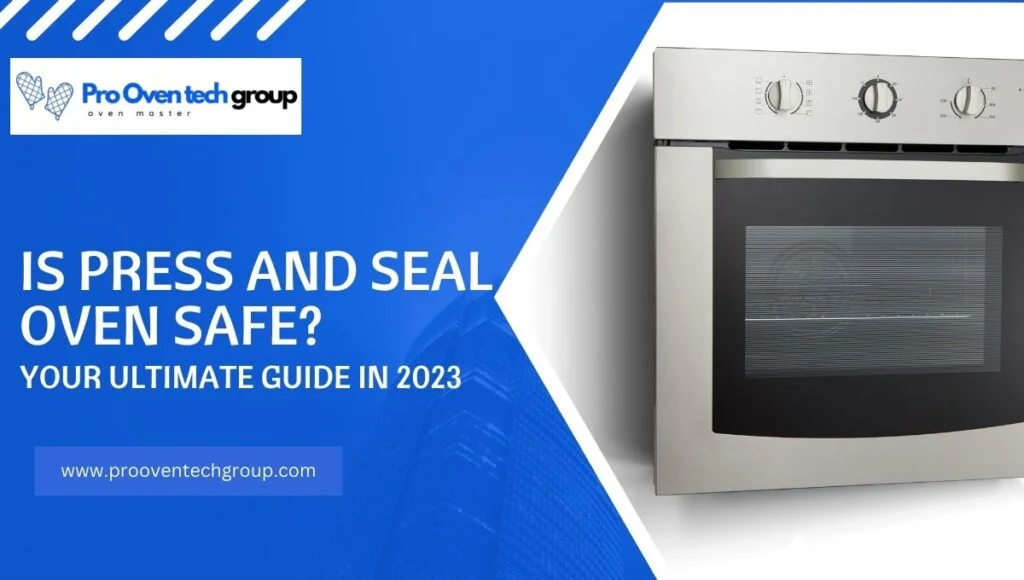Is press and seal oven safe? Cooking and baking can be daunting tasks for beginner chefs, experienced home cooks, parents and caregivers, kitchen enthusiasts – or anyone really! Finding the best tools for the job is key to having a convenient and successful culinary experience.
Yes, the press and seal wrap is oven safe, but there are some considerations to keep in mind. Press and seal wrap is a type of plastic cling film that is typically used for storing food in the refrigerator or freezer.
In this blog post we’ll explore one of these essential tools: Press & Seal; an airtight seal that keeps food fresh in your refrigerator, freezer or pantry. But most important of all—is it oven safe? We have you covered with comprehensive answers from professionals including information on definitions, safety features and tips for using Press & Seal in your oven safely.
Table of Contents
What is press and seal oven safe material made of?

- Press and seal wrap is made from a special type of plastic called polyethylene (PE).
- This material is commonly used for food packaging due to its durability, flexibility, and non-toxic properties.
- It is also resistant to moisture and air, making it an ideal choice for keeping food fresh.
- The PE material used in press and seal wrap is specifically designed to withstand low temperatures as well as high heat.
- This makes it suitable for both storing and cooking food.
- The material is also microwave-safe, making it convenient for reheating food without having to transfer it to a different container.
- Overall, the material used in press and seal wrap is considered safe for food contact and has been approved by food safety authorities such as the FDA (Food and Drug Administration).
What are the advantages and disadvantages of using press and seal oven safe materials?

Advantages:
- Versatility: Press and seal wrap can be used for a variety of purposes, from storing food to cooking it in the oven.
- Airtight seal: The press and seal feature allows for an airtight seal, keeping food fresh for longer periods of time.
- Easy to use: Press and seal wrap is easy to use, simply tear off a sheet and press it onto the desired surface.
- No need for extra tools: Unlike other types of food wrap, press and seal does not require any additional tools such as scissors or tape to create an airtight seal.
- Microwave-safe: The material used in press and seal wrap is safe to use in the microwave, making it convenient for reheating food.
- BPA-free: Press and seal wrap is free of Bisphenol A (BPA), a potentially harmful chemical commonly found in plastic containers and wraps.
- Cost-effective: Press and seal wrap is an affordable option for keeping food fresh and safe to use in the oven, making it a cost-effective choice for home cooks.
- Easy to store: The compact size of press and seal wrap makes it easy to store in your kitchen drawers or cabinets.
- Environmentally friendly: Some brands of press and seal wrap are made from recyclable materials, making them an eco-friendly option for food storage.
- Reduces food waste: With its airtight seal, press and seal wrap helps to reduce food waste by keeping food fresh for longer, preventing it from spoiling.
Disadvantages:
- Limited heat resistance: While press and seal wrap is safe to use in the oven, it does have its limitations. It is not suitable for use at very high temperatures (above 400°F/204°C) or under direct contact with flames.
- Not reusable: Unlike other types of food wrap that can be washed and reused, press and seal wrap is single-use only.
- Not suitable for all foods: Some types of food, such as acidic or high-fat foods, may cause the press and seal wrap to melt or lose its airtight seal.
- Can be difficult to tear: In some cases, it may be challenging to tear off a sheet of press and seal wrap, resulting in wastage or frustration.
- Not suitable for long-term storage: While press and seal wrap can keep food fresh for several days, it is not recommended for long-term storage.
- May leave residue: In some cases, the adhesive used on press and seal wrap may leave a sticky residue on surfaces such as countertops or bakeware.
- Not suitable for use in convection ovens: Press and seal wrap is not recommended for use in convection ovens, as the fan may cause it to melt or lose its airtight seal.
- May not work well with certain containers: Press and seal wrap may not work well with certain types of containers, such as those with curved or uneven surfaces.
- Not heat resistant on both sides: Press and seal wrap is only heat resistant on one side, so it should be used with the shiny side facing up for optimal results.
- Limited sizes available: Press and seal wrap may not come in a wide range of sizes, making it difficult to find the right fit for certain containers or dishes.
How to ensure that your press and seal oven safe products will last for long term use?
To ensure that your press and seal oven safe products last for long-term use, it is important to follow some key tips. Firstly, always check the heat resistance of the wrap before using it in the oven and avoid using it at high temperatures or under direct contact with flames. Secondly, store the wrap in a cool and dry place to prevent it from melting or losing its adhesive properties.
Are there any recommended guidelines when using press and seal oven safe materials?
Yes, there are some recommended guidelines to follow when using press and seal oven safe materials. These include avoiding contact with sharp objects that could puncture the wrap, using it only for food storage and cooking purposes, and not using it in convection ovens or on stovetops. It is also important to read the manufacturer’s instructions carefully and only use the wrap within its recommended temperature and time limits.
Can I purchase press and seal oven safe material from local stores or online stores?
Yes, press and seal oven safe material can be purchased from both local stores and online stores. Many grocery stores or kitchen supply stores carry a variety of brands and sizes of press and seal wrap. It can also be purchased online through retailers such as Amazon or directly from the manufacturer’s website. However, it is important to ensure that the product is labeled as “oven safe” before purchasing it for this specific use.
Is there a difference between using press and seal oven safe bags versus foil paper when cooking in the oven?

Yes, there are some key differences between using press and seal oven safe bags versus foil paper when cooking in the oven. Press and seal bags provide an airtight seal, while foil paper can allow some air to enter. Additionally, press and seal bags are more versatile as they can be used for both storage and cooking, while foil paper is primarily used for wrapping or covering food. It ultimately depends on personal preference and the specific needs of the individual cook.
Conclusion Is press and seal oven safe
In the end, choosing the right tools for cooking and baking is essential for a successful culinary experience. Press and seal wrap provides convenience, airtight sealing, and safety when used in the oven. However, it also has its limitations and may not be suitable for all types of foods or long-term storage. By following recommended guidelines and proper usage, press and seal oven safe materials can be a valuable addition to any kitchen.
FAQS
Q1. Can press and Seal go in the oven?
A1. Yes, press and seal wrap can go in the oven as long as it is labeled as “oven safe” and used at the recommended temperature and time limits.
Q2. Does plastic wrap melt in the oven?
A2. Some types of plastic wrap may melt in the oven, so it is important to check the heat resistance and usage instructions before using it in high-temperature cooking.
Q3. High temperature plastic wrap for cooking?
A3. Yes, there are specific types of plastic wrap that are designed for high-temperature cooking and can be used in the oven. These are typically labeled as “oven safe” or “heat resistant.”
Q4. High temperature plastic wrap for cooking?
A4. Yes, there are specific types of plastic wrap that are designed for high-temperature cooking and can be used in the oven. These are typically labeled as “oven safe” or “heat resistant.”
Q5. What kind of plastic wrap can be used in the oven?
A5. Plastic wrap that is labeled as “oven safe” or “heat resistant” can be used in the oven. It is important to follow recommended guidelines and usage instructions for optimal results. Overall, it is important to choose the right type of plastic wrap for your intended use, whether it be for cooking, storage, or both.

